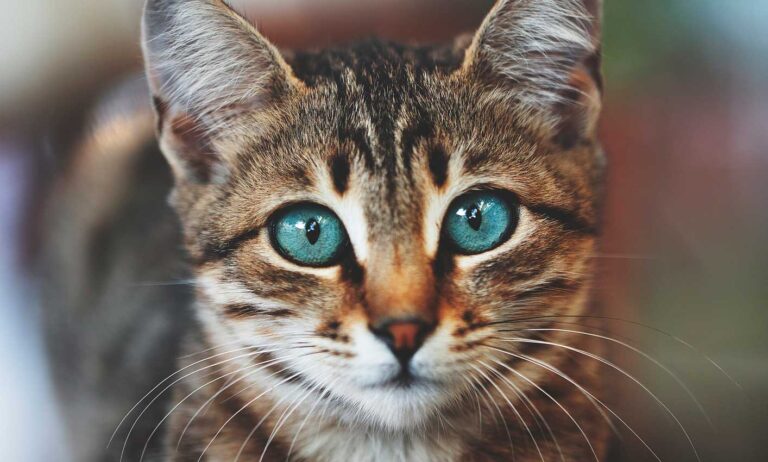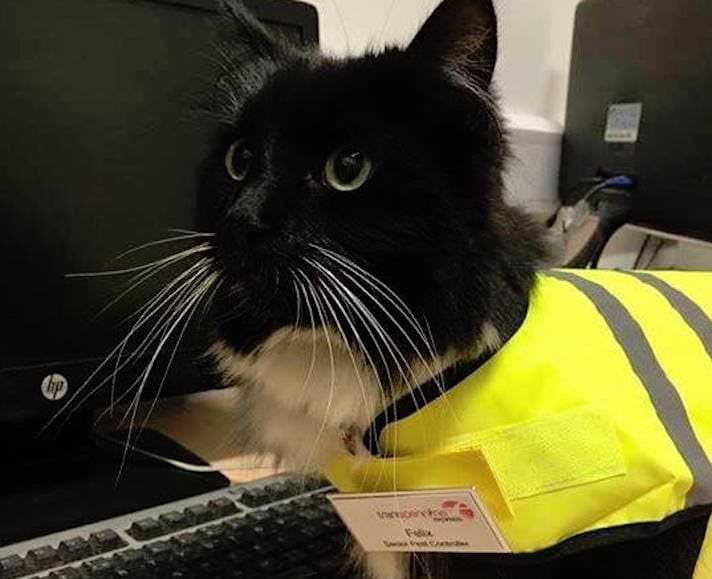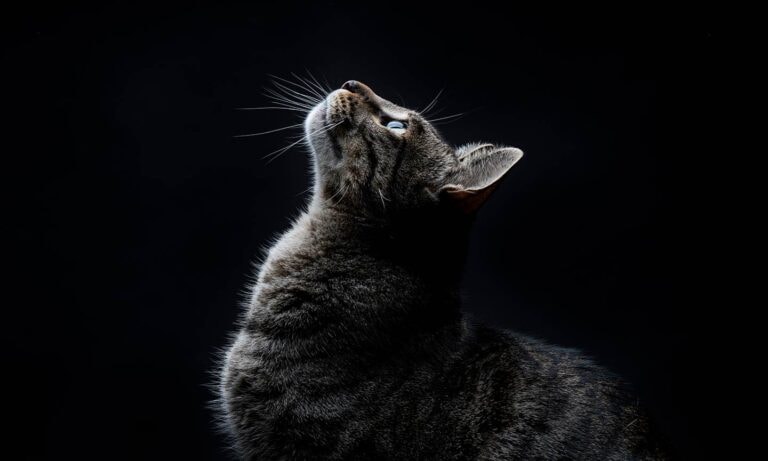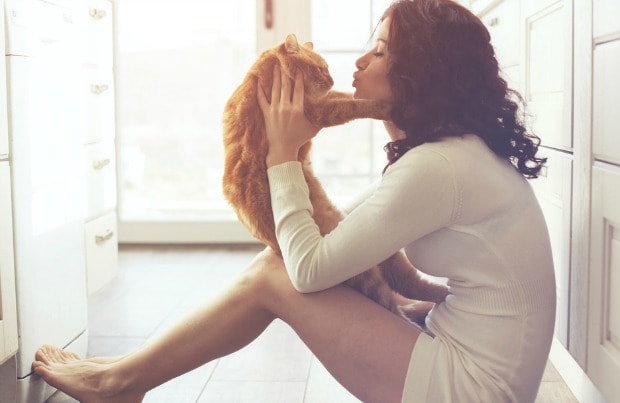If you’ve ever shared your home with a calico cat, chances are you had a female cat.
And you might have heard that all calicos are female, or that they’re rare, or someone probably referred to the “calico cat breed.” So, what’s the truth about these multicolored creatures of mystery? With these fun facts about calico cats, you’ll be unstoppable at the next trivia night.
1. They have signature coats.
The typical calico has large patches of white with smaller patches of orange and black. To create this coat, calicos have cells where either the black or orange gene is expressed, plus a white spotting gene being expressed in other cells. So, you end up with all kinds of variations of patched patterns of these three colors.
“Calico cats are traditionally orange, black and white, but variations/shades of the three colors exist as well,” says Russell Hartstein, certified dog and cat behaviorist and trainer and CEO (Canine Executive Officer) of Fun Paw Care in Los Angeles, California. “Each calico is so unique in color—and temperament—that you’ll likely never encounter two of the same.”
2. Most, but not all calico cats are female.
The reason for this is that the genes responsible for orange or black coat colors are linked to the X chromosome. A separate gene is responsible for the white spotting, and it’s located on a different chromosome (not a sex-linked chromosome). Just like humans, cats have either XX or XY chromosomes that determine their sex. Hartstein explains the genetics at work in calico cats: “Since queens have two X chromosomes (XX), they can express both orange and black. Since toms have only one X chromosome (X), they are not capable, technically, of producing the three-colored coat that calicos exhibit.”
But, as he points out, gene expression isn’t so simple, and there’s a 3,000 to 1 chance of a calico being male. These calico cats have an extra chromosome (XXY) and are usually sterile.
3. They go by many names.
Outside of North America, these beautiful felines are called “tortoiseshell and white,” and calicos are generally referred to as brindle or tricolor. In Japanese, this translates to tobi mi-ke, or “triple fur,” and the Dutch name is lapjeskat, or “patches cat.”
There are even different names for calicos depending on their coloring. Those that have mostly two colors—varying shades of orange and black with very little or no white—are described as tortoiseshell cats. Cats with gray, silver and gold are known as dilute calicos, which have lighter colored fur. Yet another variation of coat pattern combines calico with tabby and goes by the name of “caliby.” If that’s not enough to have your head spinning, there’s also a “torbie,” or a cat that has a tabby pattern coat with tortoiseshell colors.
4. An entire state adopted them.
Cat people might love calicos, but there’s one state that loves these types of cats so much that they adopted them as their state symbol: Maryland.
“In 2001, the Maryland State legislature added a state symbol by naming the calico cat as the official state cat,” says Connie Spindler, communications specialist at Maryland Office of Tourism.
All it took was a little lobbying by an elementary school class from western Maryland. They were learning about government and “decided to lobby for the cat because its distinctive coloring echoed our Maryland state flag colors of red, white, black and gold,” Spindler says.
Sounds like the perfect state symbol to us!
5. Calicos might be good luck charms.
As if calico cat parents aren’t fortunate enough, they’re even luckier than they thought, as owning a calico is said to bring good luck to your home.
The popular Maneki Neko figure, a good luck symbol in Japan, is traditionally modeled after Japanese Bobtails with calico colorings of red, black and white. You’ve probably seen this cute cat figurine in shops in all sorts of incarnations—with the left or right paw raised (or both), in a variety of colors that bring different kinds of good fortune. The Maneki Neko wears a bib with a bell and holds a gold coin to bring wealth. This good luck talisman has also been adopted by Chinese culture with its paw welcoming visitors into stores to encourage a profitable business.
These multicolored cats have secured their spot not only as luck bringers, state symbols and folklore legends, but also as beloved pets—we truly are lucky.

Nikki Naser, BeChewy Senior Editor
Instead of owning 30 cats, Nikki has an impressive collection of 30 cat-themed T-shirts, and just 4 pets—a ginger-haired senior cat, a senior Maine Coon, a middle-aged Choodle, and a young kitty who showed up one day on the back steps. A former Orlando resident, Nikki worked on several tourism publications before moving to South Beach. When she’s not stopping to take pics of community cats to post on Instagram, Nikki spends her time with the office pets at Chewy, writing for their BeChewy blog.
Share:









